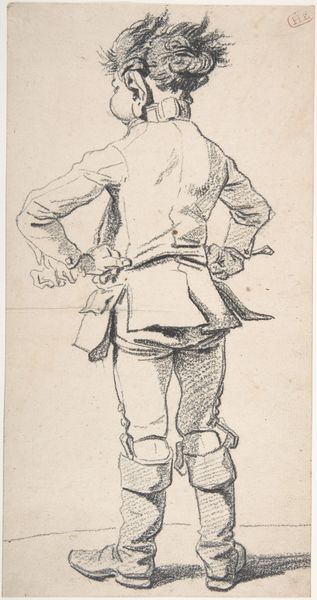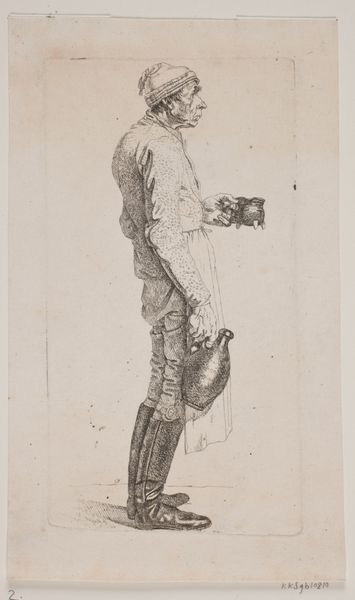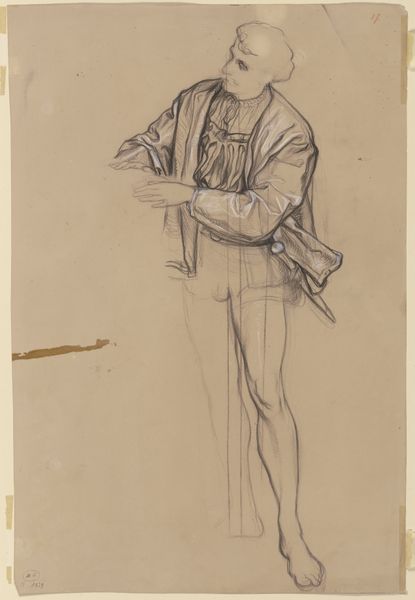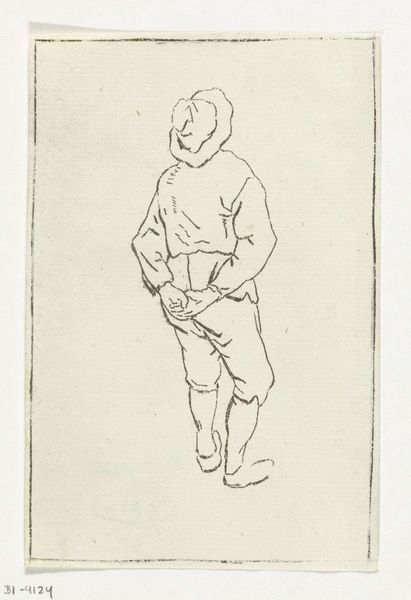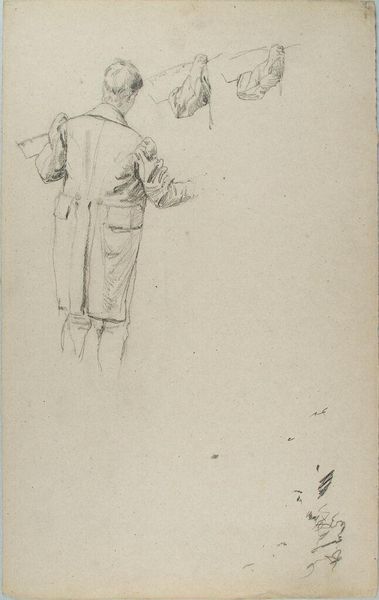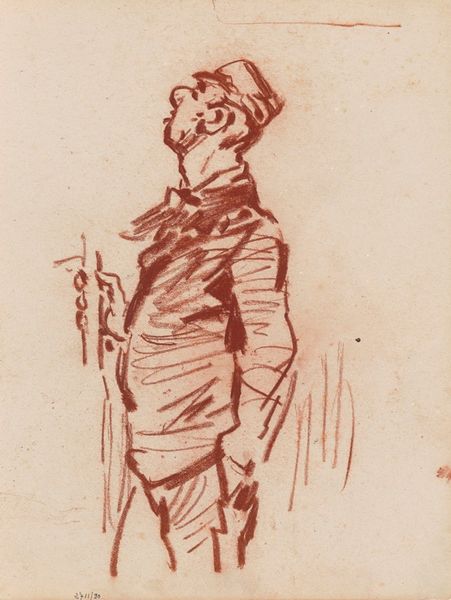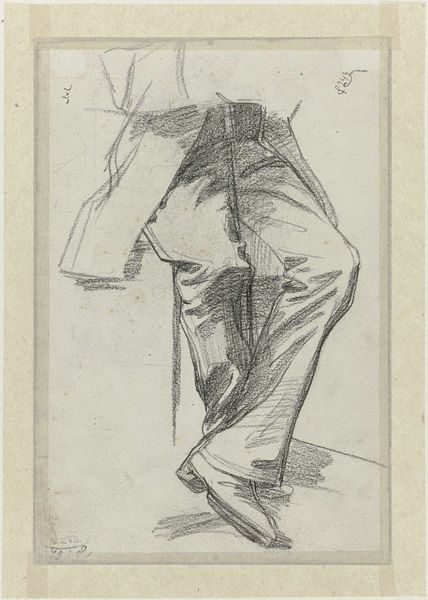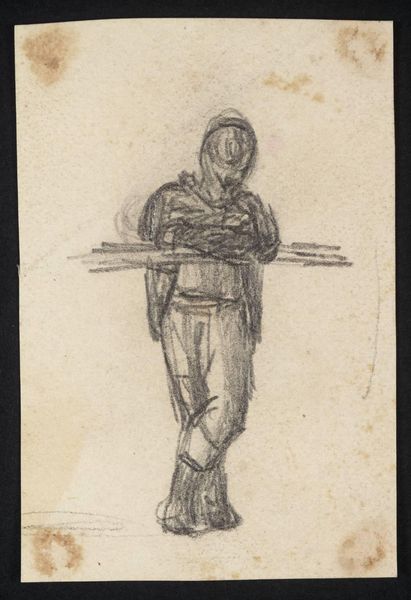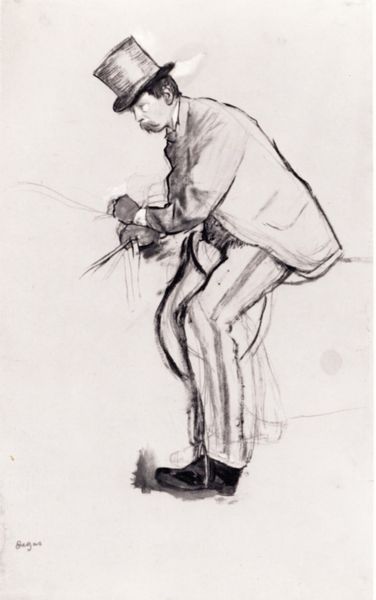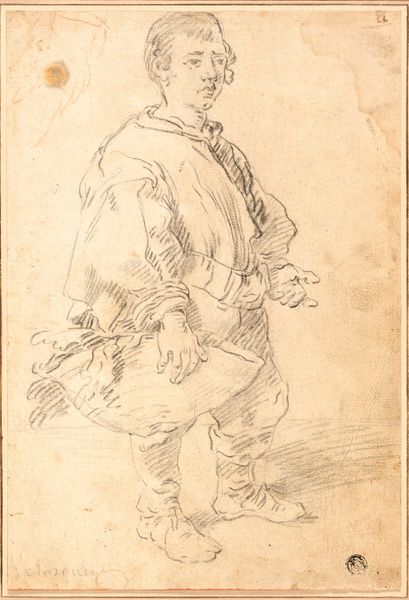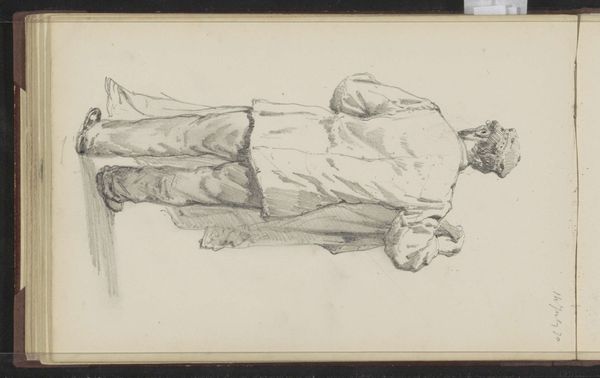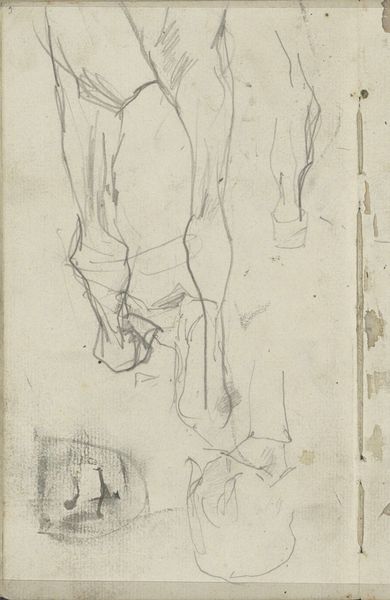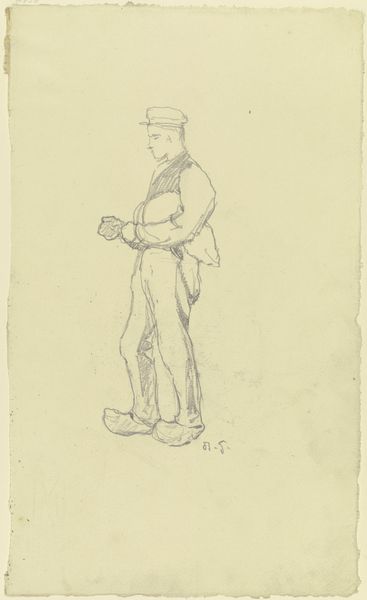
Dimensions: support: 749 x 651 mm
Copyright: © The estate of Eric Kennington | CC-BY-NC-ND 4.0 DEED, Photo: Tate
Editor: This is Eric Kennington's "Bayonet Practice," made in 1917. It's a drawing on brown paper, and it feels unfinished, yet incredibly tense. What do you see in it? Curator: It's a striking commentary on the brutal mechanization of warfare. Kennington shows us the dehumanizing process of turning young men into instruments of violence. The sketches surrounding the main figure – the helmet, the rifle – they highlight the reduction of identity. Editor: So it's not glorifying war? Curator: Absolutely not. The facelessness of the figure, the repetition implied by "practice," speaks to the systemic erasure of individuality within the military machine. It's a powerful indictment of the social forces at play during wartime. Editor: I see it now; the drawing’s incompleteness reinforces that sense of something lost, or never fully formed. Curator: Precisely. This piece invites us to reflect on the human cost of conflict and question the narratives that glorify violence.
Comments
tate 8 months ago
⋮
http://www.tate.org.uk/art/artworks/kennington-bayonet-practice-n03205
Join the conversation
Join millions of artists and users on Artera today and experience the ultimate creative platform.
tate 8 months ago
⋮
Kennington served in France and was invalided out of the army in June 1915. He was an official war artist from 1916-19. This drawing is a study for a lithograph. It was one in a series called Making Soldiers which the Ministry of Information published as part of the war effort in 1917. In practice soldiers charged at straw bags representing enemy soldiers. The act of bayoneting an enemy might perhaps be compared with that of the soldier who pierced Christ’s side when he was on the cross. Gallery label, December 2004
